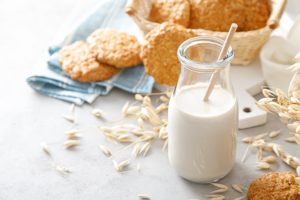Flavours are the heart of what makes food enjoyable and essential to how we experience it. Even though flavours don’t provide any direct nutritional benefits, they play a crucial role in how food smells and tastes. It’s a simple idea, but it’s incredibly powerful: Flavour is what gives noodles their spicy kick, and ice cream its cool, smooth feel. While there’s a lot of science behind how flavour works, what really matters is how quickly it can shape our food experiences—often making them amazing or disappointing right away.
The importance of flavour in the food and beverage industry probably overwhelms most other aspects. It can transform ordinary ingredients into extraordinary moments, simulating people’s senses to the fullest. In the realm of food and drink, flavour comes out on top, having the power to evoke stimulate memories and even influence our moods—think back to how evocative a warm home-cooked meal can be and the emotions it can unlock.
This blog will tackle all this and more in detail, from the types of flavours to their applications in the food industry to what’s known as a flavour profile.
The Importance of Flavour in the Food Industry
Beyond the established effect on consumers, flavour drives product innovation, marketing strategy, and other business-related efforts. A good flavour profile (we’ll get to that in a bit) could make an ordinary-looking product exceptional. Take the choco pie—it packs a punch of flavour despite its simple exterior. And consumers love it, as evidenced by rising sales numbers in the country.
The food manufacturers are searching for ways to make their products taste better, experimenting with ingredients and ideas to appeal to wider audiences while keeping costs down. Poor-tasting food could be disastrous—knowing how certain foods should taste and what customers in a particular region like is vital to staying relevant. There’s a reason shrimp-flavoured cake isn’t all the rage in India. (And that isn’t to say experimental flavours don’t work; they only require nuance and plenty of research before being introduced.)
Flavour is critical in the food industry, whether in a bustling Michelin-star restaurant’s kitchen or in food manufacturers’ production lines. It is the primary element for a successful product. For context, the pursuit of great flavours has led to meaningful investments in research and development within the industry. As customer tastes evolve across regions, flavour scientists and chefs find ways to create flavours that match newer demands. This is crucial for businesses to stay competitive and for the food and beverage industry to flourish.
Different Types of Flavours
Natural Flavours
Natural flavours come from natural sources such as vegetables, fruits, spices, and other similar organic materials. They can even come from microbial fermentation. A ‘natural flavour’ usually fits the criteria above, but the definition varies from country to country.
Examples of natural flavours are lemon, vanilla, rose, and chocolate. Symega, in fact, has a fantastic range of natural flavours developed with the utmost care and cutting-edge technology.
Artificial Flavours
Artificial flavours are chemically synthesised compounds and are not naturally occurring. Since foods can be expressed as chemical structures, flavours can be built or reproduced in a lab.
Artificial flavours have been a point of contention among consumers, industry experts, and manufacturers for a while. Despite the negative attention, they aren’t entirely unhealthy, as they pass stringent testing and authorisation before being approved. Research into apparent health issues has been conflicting, and we’ll need more conclusive evidence before we can arrive at a determination.
Nature-Identical Flavours
Nature-identical flavours are lab-created synthetic compounds that are chemically identical to natural flavourings. They have the same fundamental structure as their natural counterparts, and the human body cannot distinguish the two. It might feel like a deception, but our brains perceive the chemicals as they are with no consideration to whether they were formed in a beaker or obtained from an actual plant.
How Flavours Are Created
Flavourists are scientists responsible for the way flavours taste and impact our senses. You’ll usually find them hard at work in their natural habitat—a laboratory. With flavour creation being both a science and an art, flavourists combine their practical knowledge with creative ideas to achieve desired flavour profiles.
It is possible to blend various chemical compounds with ingredients like sweeteners, acids, and salts to create distinct flavours. These compounds could be sourced from either natural or synthetic raw materials. Natural flavours such as spices and herbs can be used as they are, while other flavours are obtained through distillation, solvent extraction, pressing, and chromatographic separation. Some widely utilised artificial flavouring compounds include esters, phenolics, ketones, terpenoids, and pyrazines.
Sensory evaluation is also an integral part of flavour development. Experienced taste panels ensure the flavours meet expected standards and are ready for market.
What Are Flavour Profiles?
A ‘flavour profile’ is a comprehensive description of a food or beverage’s taste and aromatic characteristics. Turns out the flavour isn’t merely about the taste; it involves feeling the sensations you come across when food passes into your mouth—the sum of taste, smell, and physical traits (hot, cold, etc.). Think of flavour profile as a measure of how foods interact with your taste buds and the sensations they elicit. You can encounter different tastes and textures at different points while eating.
The primary taste components that make up flavour profiles include:
Salty
Needs no introduction. A flavour that’s as old as time—adding salt to foods can be a quick fix for blandness. Simple yet efficient and universally loved, it’s a staple in most flavour profiles.
Sweet
There’s a reason desserts and confectioneries are a hit with people everywhere—who doesn’t like to indulge in a pastry as a personal reward or enjoy an ice cream on a hot day? Sweet evokes a comforting sensation and can be nostalgic. Sweet can also offset other harsher tastes and bring about balance.
Sour
Sour flavours leave an acidic or tart sensation. They can add a bit of zest to proceedings or neuter spicy and sweet tones. The taste is central to citrus fruits, vinegar, and fermented products.
Bitter
It’s not a fan favourite, but the bitter taste still plays a crucial role in balancing other flavours. Commonly described by the taste of coffee, leafy greens, and cocoa, bitter flavours can offer depth to dishes and make them punchier.
Heat
Heat comes in different sizes and shapes. While not everyone’s cup of tea, flavours from spices, ginger, and chilli peppers are relished by several people. They add spice and excitement to dishes and are known for their stimulating properties. (Just remember to stay on the right side of the Scoville scale.)
Umami
Umami is a singular taste, distinct from the other more well-known ones mentioned above. It is the taste of glutamate and can be sensed when we consume foods like fish, mushrooms, and tomatoes. Umami provides depth of flavour to dishes, giving them that mysterious edge that grabs your attention.
Application of Flavours in the Food Industry
The versatility of flavours makes them indispensable to manufacturers across the spectrum. For starters, the beverage industry. Cast your mind back to the last time you sipped on a bland, tasteless drink. No? That’s because beverages are a showcase for flavour innovation. From energising sports drinks to colas to expensive alcoholic spirits, beverages are noted for their elaborate and sometimes outlandish flavours (we’re looking at you, bacon-flavoured soda). Bakery items are also big on flavour profiles, marrying delectable taste and texture for quite the experience. Take your pick from crunchy biscuits or a little blueberry muffin. Next up is confectionery, which makes use of various sugars and syrups to give all kinds of cakes, desserts, and candies their sweetness. And speaking of sweet things, there’s the dairy segment—we’ve all had ready-to-drink flavoured milkshakes and loved them. Finally, there are snacks and convenience foods. On one hand, flavours like toffee and caramel add a sweet crunch to popcorn. On the other, frozen foods and canned goods are packed with loads of flavour to ensure your on-the-go options are not only easy to eat but also delicious.
The Future of Flavours
Flavours are evolving as their applications in the food industry change due to consumer preferences, technological advancements, and cultural shifts. Emerging trends in this space are around diverse, exciting taste experiences as consumers are open to being adventurous after seeking familiar tastes during the pandemic. Plant-based and fermented flavours are gaining popularity, while there is talk of floral flavours capturing people’s attention over their apparent healthy, positive image. Additionally, as the health influencer market gathers pace, there’s every chance offbeat flavours such as chamomile and honeysuckle could be thrust into the mainstream. Other possible trends could include a demand for natural and clean-label products and the development of personalised taste experiences. Which is to say, you could envision a future when a food product is manufactured just the way your taste buds like it.
As we explore flavour science further, we can see more innovative flavours ahead. And exciting ways of making them! Artificial intelligence could very well go beyond its current applications and aid in flavour design and the discovery of new flavour compounds. Barring a rise-of-the-machines scenario, the possibilities are thrilling.
Flavour All the Way
Flavours are the sensory building blocks of our culinary experiences. They undeniably shape our perceptions and drive our food choices. Besides, good food is about the complexities of flavour profiles as much as the presentation—the numerous textures, tantalising scents, and taste. Exploring these intricacies helps us make informed decisions about what we consume and shapes an appreciation for the work that goes into creating the food we love dearly.
Whether it’s the complex authenticity of natural flavours, the alchemical magic of artificial alternatives, or the hybrid advantage of nature-identical flavours, there’s a flavour type for every season and need. Creating these flavours involves detailed processes and professionals with a deep knowledge of taste, aroma, and science. These sensory wizards ensure the food we eat is palatable and safe while using their expertise to arrive at newer flavour compositions all the time. Take these fantastic flavours and make them yours—add them to your products; experiment with your own combinations and discover ways of making your food stand out from the crowd. As the world grows more connected, people are opening up to bolder and more adventurous tastes. So, match that paprika with blue cheese. Give elderflower and apple a go. You just might have a hit on your hands.
FAQs
They differ in their sources and how they are obtained. An artificial banana flavouring could be synthesised in a lab and pass for flavour obtained from an actual banana despite having a different molecular structure.
Natural flavours can be prepared in several ways. They can be obtained from fruits by expression. Often, these flavours are obtained by extraction, including distillation, chromatographic separation, solvent extraction, and pressing.
Despite the bad press they receive, artificial food flavours aren’t outright bad for your health. They are obviously not recommended to consume in large amounts, and while there is conflicting research in some areas, artificial flavours approved for use are generally safe thanks to the stringent testing and authorisation processes involved.
Emerging trends could be the rise of lesser-known botanical/floral flavours such as honeysuckle and chamomile. Meanwhile, plant-based and fermented flavours could soon be on shelves. We could also see brands striking a balance between comforting flavours (good old strawberry and orange) and more experimental ones (for instance, a mix of hot and sweet desserts, chips, and more). Brands will also continue to bring international flavours to local regions to diminish flavour boundaries.




